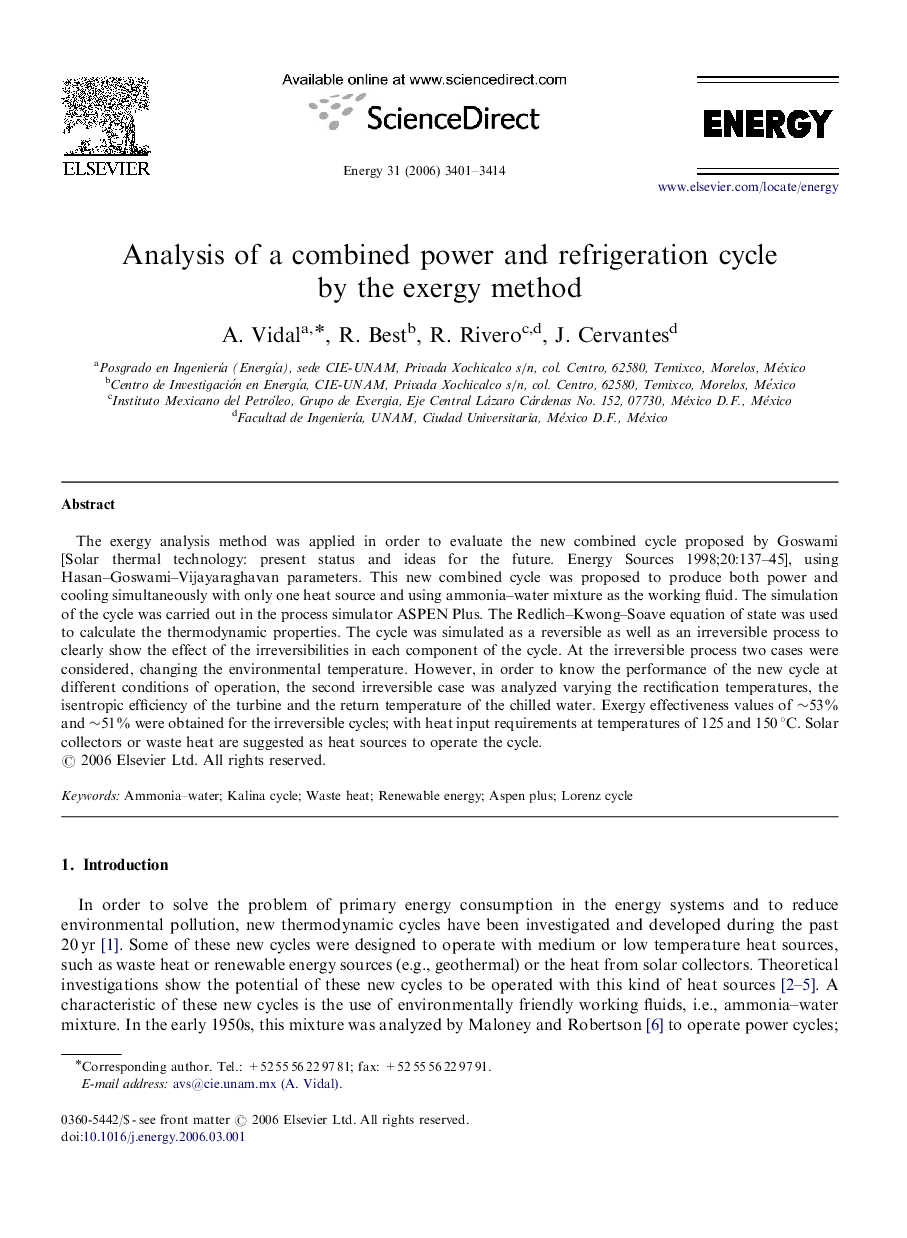| Article ID | Journal | Published Year | Pages | File Type |
|---|---|---|---|---|
| 1736109 | Energy | 2006 | 14 Pages |
The exergy analysis method was applied in order to evaluate the new combined cycle proposed by Goswami [Solar thermal technology: present status and ideas for the future. Energy Sources 1998;20:137–45], using Hasan–Goswami–Vijayaraghavan parameters. This new combined cycle was proposed to produce both power and cooling simultaneously with only one heat source and using ammonia–water mixture as the working fluid. The simulation of the cycle was carried out in the process simulator ASPEN Plus. The Redlich–Kwong–Soave equation of state was used to calculate the thermodynamic properties. The cycle was simulated as a reversible as well as an irreversible process to clearly show the effect of the irreversibilities in each component of the cycle. At the irreversible process two cases were considered, changing the environmental temperature. However, in order to know the performance of the new cycle at different conditions of operation, the second irreversible case was analyzed varying the rectification temperatures, the isentropic efficiency of the turbine and the return temperature of the chilled water. Exergy effectiveness values of ∼53% and ∼51% were obtained for the irreversible cycles; with heat input requirements at temperatures of 125 and 150 °C. Solar collectors or waste heat are suggested as heat sources to operate the cycle.
